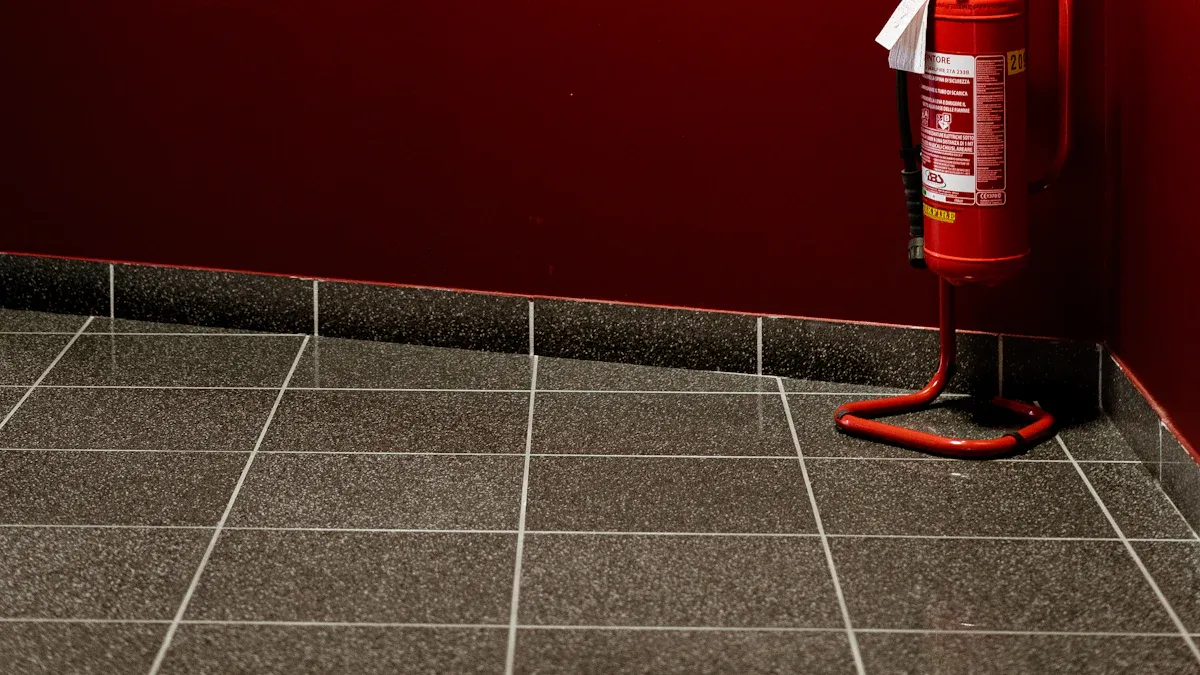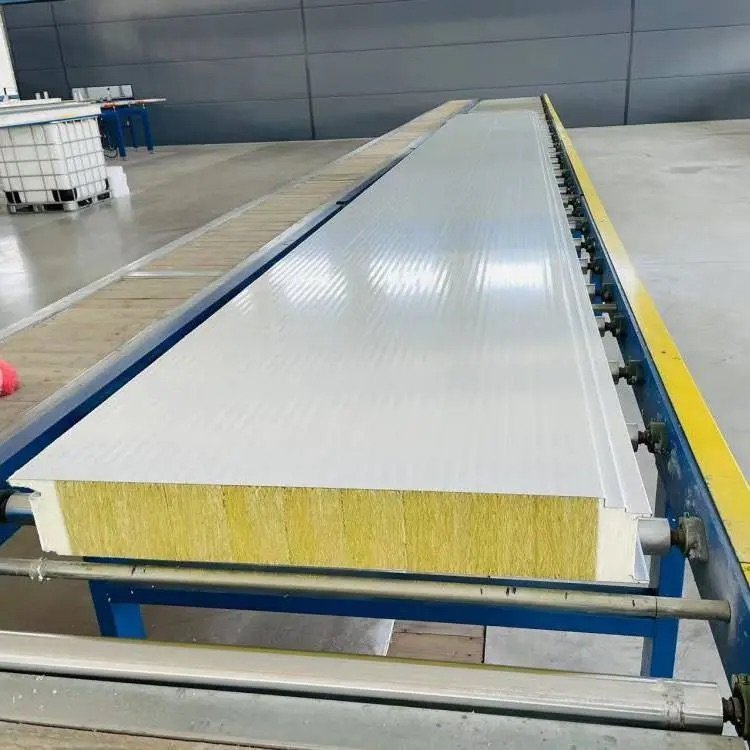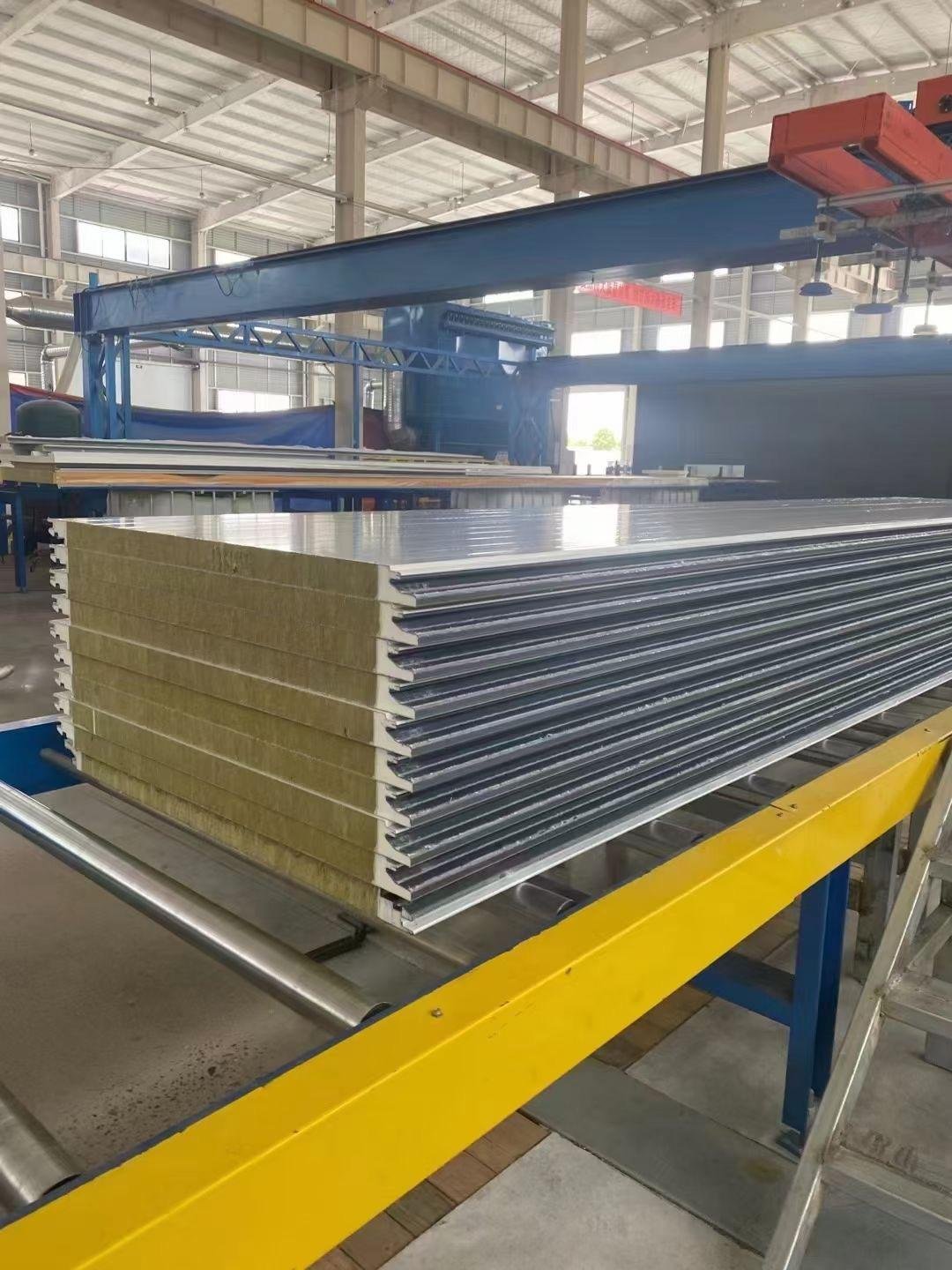
Fire ratings play a critical role in ensuring the safety and reliability of PU sandwich panels. You rely on these ratings to assess how well the panels resist fire and protect structures. Certified panels with fireproof surfaces and safe cores can block flames and slow heat transfer, reducing fire hazards. However, panels with flammable insulation may worsen fire conditions.
Fire-rated sandwich panels lower damage risks and save money, making them essential in modern construction.
Regulations like UNE-EN 13501-1: 2019 ensure compliance by outlining fire resistance and smoke production standards, helping you make informed material choices.
Key Takeaways
Fire ratings help measure how safe PU sandwich panels are. Higher ratings mean better fire protection, lowering danger in emergencies.
Pick panels with certifications like EN 13501-1 or ASTM E84. These certifications show they meet fire safety rules and make buildings safer.
Use B1-rated panels for top fire safety. These panels slow flames and stop burning, giving more time to escape during a fire.
Correct installation and care are important for fire safety. Hire experts and check panels often to keep them working well.
Think about fire safety and other needs too. Look at insulation and easy setup to find the right panels for your project.
Understanding Fire Ratings for PU Sandwich Panels

Definition and Purpose of Fire Ratings
Fire ratings help you understand how materials perform during fire incidents. They measure a material’s ability to resist fire and prevent its spread. For PU Sandwich Panels, these ratings are essential for ensuring safety in construction. Testing standards, such as EN 13501-1, evaluate the fire behavior of these panels under controlled conditions. Certifications confirm compliance with fire safety regulations, making the panels suitable for residential and industrial use.
Definition/Purpose | Description |
|---|---|
Fire Resistance Ratings | Indicate how well materials withstand fire, crucial for safety in construction. |
Testing Standards | Ensure that sandwich panels are safe and effective under fire conditions. |
Certifications | Validate that panels comply with fire safety regulations, enhancing building safety and reducing risks. |
By understanding fire ratings, you can select materials that meet specific safety requirements and reduce risks during fire emergencies.
Key Fire Rating Classifications
Class A, B, and C Ratings
Fire ratings classify materials based on their performance during fire tests. Class A materials offer the highest resistance to fire, while Class C materials provide the least. For PU Sandwich Panels, selecting a higher-rated material ensures better safety and structural integrity. Panels with lower ratings can worsen fire situations, increasing risks for occupants.
B1, B2, and B3 Ratings for PU Panels
In some regions, PU Sandwich Panels are categorized as B1, B2, or B3 based on their flammability. B1 panels are flame-retardant and self-extinguishing, making them the safest option. B2 panels are moderately flammable, while B3 panels are highly flammable and unsuitable for most construction projects. Choosing B1-rated panels enhances safety and provides more time for evacuation during a fire.
Fire Resistance vs. Fire Reaction
Fire resistance and fire reaction are two distinct properties you should consider. Fire resistance measures how long a material can withstand fire without losing its structural integrity. For example, some panels are designed to endure 60 minutes of fire exposure. Fire reaction, on the other hand, evaluates how a material behaves when exposed to fire, including its flammability and smoke production. PU Sandwich Panels with fire-resistant cores and coatings perform better in both aspects, ensuring greater safety.
Tip: Always check both fire resistance and fire reaction ratings when selecting PU Sandwich Panels for your project.
Fire Standards and Certifications for PU Sandwich Panels
International Standards
EN 13501-1
EN 13501-1 is one of the most recognized fire standards globally. It categorizes materials based on their fire performance, ranging from A1 (non-combustible) to F (easily combustible). PU sandwich panels tested under this standard receive ratings that reflect their ability to resist flames and limit smoke production. This classification helps you choose panels that meet specific safety requirements for your project.
ASTM E84
ASTM E84 evaluates the flame spread and smoke development of building materials. PU sandwich panels undergo this test to determine how quickly fire spreads across their surface and the amount of smoke they produce. Panels with lower flame spread and smoke ratings offer better fire safety. This standard is widely used in North America and ensures compliance with regional fire safety regulations.
Standard | Description |
|---|---|
EN 13501-1 | Ranks materials from A1 (non-combustible) to F (easily combustible). |
EN 13823 | Measures flame spread and smoke production. |
ASTM E84 | Assesses flame spread and smoke in materials. |
NFPA 285 | Tests how walls handle fire. |
ISO 13784-1 | Evaluates fire performance of sandwich panels. |
Regional Certifications
FM Approvals
FM Approvals certifies PU sandwich panels for fire safety and performance. Panels that pass FM tests meet stringent requirements for flame resistance and structural integrity during fire incidents. These certifications are essential for projects requiring high safety standards, such as industrial facilities and commercial buildings.
UL Certifications
UL certifications validate the fire safety of PU sandwich panels through rigorous testing. UL-rated panels demonstrate compliance with fireproofing standards, ensuring their suitability for various applications. Builders rely on UL certifications to select materials that enhance safety and meet legal requirements.
Role of Standards in Ensuring Safety and Compliance
Fire standards play a critical role in protecting lives and property. International benchmarks like EN 13501-1 and ASTM E84 ensure that PU sandwich panels perform reliably under fire conditions. Certified panels reduce fire risks by limiting flame spread and smoke production. Testing methods such as EN 13823 provide valuable insights into material behavior during fires, helping you make informed decisions.
Certified panels also comply with strict fire safety laws, such as UNE-EN 14509:2014, ensuring legal adherence. These standards validate the performance of PU sandwich panels, making them a safer choice for construction projects.
Factors Influencing Fire Performance of PU Sandwich Panels
Core Material Composition and Additives
The core material of a PU Sandwich Panel plays a significant role in its fire performance. Polyurethane (PU) foam, commonly used as the core, can be enhanced with fire-retardant additives to improve its resistance to flames. These additives reduce the material’s flammability and slow down the spread of fire. You should look for panels that include halogen-free flame retardants, as they minimize toxic gas emissions during combustion.
The type of PU foam also matters. Rigid PU foam generally offers better fire resistance compared to flexible foam. Manufacturers often test and certify their panels based on the core material’s fire behavior. By understanding the composition of the core, you can select panels that meet your project’s fire safety requirements.
Panel Thickness and Density
The thickness and density of a PU Sandwich Panel directly affect its fire performance. Thicker panels provide more insulation, which can delay the spread of heat and flames. Higher-density cores are less likely to ignite quickly, offering better fire resistance. For example, a panel with a density of 40 kg/m³ will typically perform better in fire tests than one with a lower density.
When choosing panels, consider the specific fire safety needs of your building. Thicker and denser panels may cost more, but they provide enhanced protection. Always check the manufacturer’s specifications to ensure the panel’s thickness and density align with your safety goals.
Surface Coatings and Finishes
The outer surface of a PU Sandwich Panel also influences its fire behavior. Coatings and finishes made from non-combustible materials, such as metal or fire-resistant paints, can act as a protective barrier. These surfaces prevent the core material from being exposed to flames, reducing the risk of ignition.
You should also consider the durability of the coatings. High-quality finishes resist wear and tear, maintaining their fire-resistant properties over time. Panels with poor-quality coatings may degrade, compromising their fire performance. Regular maintenance ensures the surface remains intact and effective in fire prevention.
Installation and Maintenance Practices
Proper installation and maintenance practices significantly enhance the fire performance of a PU Sandwich Panel. You should follow specific guidelines to ensure the panels function effectively and safely over time.
Installation Tips
Hire Professionals: Always rely on trained professionals for installation. They understand the technical requirements and ensure the panels are securely fixed.
Use Approved Accessories: Select fire-rated fasteners, sealants, and joint fillers. These components improve the overall fire resistance of the structure.
Ensure Proper Sealing: Gaps between panels can compromise fire safety. Make sure all joints are tightly sealed to prevent fire or smoke from spreading.
Follow Manufacturer Guidelines: Each panel comes with specific installation instructions. Adhering to these ensures compliance with fire safety standards.
Tip: Conduct a thorough inspection after installation to identify and fix any potential vulnerabilities.
Maintenance Practices
Regular maintenance keeps your PU Sandwich Panel in optimal condition. Here are some essential practices:
Inspect Panels Periodically: Check for damage, such as dents or scratches, that could expose the core material.
Clean Surfaces Properly: Use non-abrasive cleaning agents to avoid damaging fire-resistant coatings.
Repair Damages Promptly: Address any issues, like loose fasteners or degraded seals, immediately to maintain fire performance.
Monitor Coatings: Ensure the fire-resistant surface coatings remain intact. Reapply or repair them if necessary.
Routine maintenance not only extends the lifespan of the panels but also ensures they retain their fire safety properties. By following these practices, you can maximize the safety and durability of your construction materials.
Comparing PU Sandwich Panels with Alternative Materials

PU Panels vs. Mineral Wool Panels
When comparing PU sandwich panels to mineral wool panels, you notice significant differences in performance and application. PU panels excel in thermal insulation due to their low thermal conductivity. This makes them ideal for energy-efficient buildings. Mineral wool panels, on the other hand, offer superior fire resistance. They are non-combustible and can withstand higher temperatures without degrading.
Mineral wool panels also provide better sound insulation, making them suitable for environments requiring noise control. However, PU panels are lighter and easier to install, reducing labor costs and construction time. While mineral wool panels are more fire-resistant, PU sandwich panels balance insulation performance and cost-effectiveness, making them a versatile choice for many projects.
Feature | PU Sandwich Panels | Mineral Wool Panels |
|---|---|---|
Thermal Insulation | Excellent | Moderate |
Fire Resistance | Moderate | High |
Weight | Lightweight | Heavier |
Installation | Easier | More labor-intensive |
PU Panels vs. EPS Panels
EPS (Expanded Polystyrene) panels are another alternative to PU sandwich panels. EPS panels are cost-effective and lightweight, making them popular for budget-conscious projects. However, PU panels outperform EPS in thermal insulation and fire safety. PU panels have a higher R-value, meaning they provide better insulation with thinner profiles.
EPS panels are more flammable and produce toxic smoke when burned. PU panels, especially those with fire-retardant additives, offer better fire performance. If you prioritize safety and energy efficiency, PU sandwich panels are the better option.
Fire Safety Advantages and Limitations of PU Panels
PU sandwich panels offer several fire safety advantages. Panels with fire-retardant cores and coatings can slow flame spread and reduce smoke production. This gives occupants more time to evacuate during a fire. Additionally, PU panels are lightweight, which minimizes structural load and enhances design flexibility.
However, PU panels have limitations. They are not entirely non-combustible and may degrade under prolonged fire exposure. To maximize safety, you should select panels with high fire ratings and ensure proper installation. Regular maintenance also helps retain their fire-resistant properties.
Note: Always consult fire safety standards and certifications when choosing PU sandwich panels for your project.
Practical Tips for Selecting PU Sandwich Panels
Evaluating Fire Ratings and Certifications
When selecting a PU Sandwich Panel, you should prioritize fire ratings and certifications. These ratings indicate how well the panel performs under fire conditions, ensuring safety and compliance. Look for panels tested under recognized standards like ASTM E84 and NFPA 285. ASTM E84 evaluates flame spread and smoke generation, while NFPA 285 assesses how walls perform during fire exposure. Both are critical for meeting U.S. fire safety regulations.
Standard | Description |
|---|---|
ASTM E84 | Evaluates flame spread and smoke generation. |
NFPA 285 | Assesses how walls perform under fire conditions. |
By understanding these certifications, you can confidently choose panels that meet your project’s safety requirements.
Consulting with Manufacturers and Suppliers
Engaging with manufacturers and suppliers helps you make informed decisions. Ask them about the fire ratings and certifications of their PU Sandwich Panels. Request detailed test reports to verify compliance with safety standards. Reliable suppliers often provide guidance on selecting panels that match your building’s needs. They can also recommend panels with enhanced fire-resistant properties, such as those with halogen-free additives or non-combustible surface coatings.
Tip: Always choose suppliers with a proven track record of delivering certified and high-quality panels.
Balancing Fire Safety with Other Performance Needs
While fire safety is essential, you should also consider other performance factors. PU Sandwich Panels offer excellent thermal insulation, which reduces energy costs. Evaluate the panel’s thickness and density to ensure it meets your insulation requirements. Additionally, consider the panel’s weight and ease of installation, as these can impact construction timelines and costs.
Balancing fire safety with thermal performance, durability, and cost-effectiveness ensures you select the best panel for your project. Always prioritize panels that meet fire safety standards without compromising on other critical features.
Importance of Professional Installation
Professional installation plays a vital role in ensuring the safety and performance of PU sandwich panels. Improper installation can compromise fire resistance, thermal insulation, and structural integrity. By hiring trained professionals, you can avoid these risks and maximize the benefits of your panels.
Why Professional Installation Matters
Ensures Compliance with Standards
Certified installers follow fire safety regulations and manufacturer guidelines. This ensures your panels meet legal requirements and perform as intended during emergencies.Prevents Installation Errors
Professionals understand the technical aspects of panel installation. They ensure proper alignment, secure fastening, and tight sealing of joints. These steps prevent gaps that could allow fire or smoke to spread.Optimizes Panel Performance
Proper installation enhances the thermal and acoustic properties of PU sandwich panels. It also extends their lifespan by reducing wear and tear caused by incorrect handling.
Tip: Always verify the credentials of your installer. Look for certifications or experience in handling fire-rated panels.
Risks of DIY Installation
Attempting to install PU sandwich panels yourself may seem cost-effective, but it often leads to costly mistakes. Misaligned panels or poorly sealed joints can create vulnerabilities. These issues not only reduce fire resistance but also increase energy loss. Additionally, DIY installation may void the manufacturer’s warranty, leaving you unprotected in case of defects.
Investing in professional installation ensures your panels perform safely and efficiently. It also provides peace of mind, knowing your building complies with fire safety standards. Always prioritize expertise over shortcuts when it comes to safety-critical materials.
Fire ratings and standards ensure the safe use of PU Sandwich Panel systems in construction. Certified panels, tested under standards like EN 13501-1 and ISO 13784-1, reduce fire risks by limiting flame spread and smoke production. These features provide critical time for evacuation and minimize damage during emergencies. Compliance with these standards not only enhances safety but also ensures adherence to legal requirements. When selecting materials, prioritize fire-rated panels to protect lives and property. Informed decisions lead to safer, more reliable structures.
FAQ
What are PU sandwich panels made of?
PU sandwich panels consist of a polyurethane foam core sandwiched between two outer layers, typically metal or non-combustible materials. The core provides insulation, while the outer layers offer structural support and fire resistance.
How do fire ratings impact panel selection?
Fire ratings indicate how well panels resist flames and smoke. Higher-rated panels improve safety and comply with regulations. Always choose panels with certifications like EN 13501-1 or ASTM E84 for reliable fire performance.
Can PU sandwich panels be used in high-risk areas?
Yes, but only panels with high fire ratings, such as B1 or Class A, should be used. These panels resist flames and slow heat transfer, making them suitable for industrial and commercial buildings.
How often should PU panels be inspected?
Inspect panels every six months. Check for damage, loose fasteners, or degraded coatings. Regular maintenance ensures panels retain their fire-resistant properties and perform effectively.
Are PU panels better than EPS panels for fire safety?
Yes, PU panels outperform EPS panels in fire safety. They spread flames slower and produce less toxic smoke. EPS panels are more flammable, making PU panels a safer choice for most projects.







